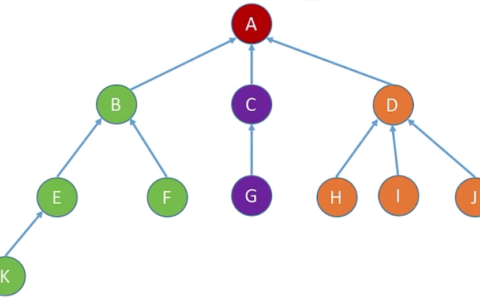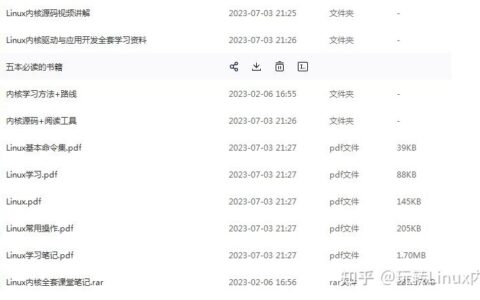今天来学习下RelativeLayout布局
新建RelativeActivity,并且打开布局更改根布局如下
<?xml version="1.0" encoding="utf-8"?> <RelativeLayout xmlns:android="http://schemas.android.com/apk/res/android" xmlns:app="http://schemas.android.com/apk/res-auto" xmlns:tools="http://schemas.android.com/tools" android:layout_width="match_parent" android:layout_height="match_parent" tools:context=".main.RelativeActivity"> </RelativeLayout>RelativeLayout控制子控件有下面几个常用属性,其值分别为false 或者true
android:layout_alignParentTop=”” 子控件与顶部居左对齐
android:layout_alignParentBottom=”” 子控件与底部居左对齐
android:layout_alignParentLeft=”” 子控件居左
android:layout_alignParentRight=”” 子控件居右
android:layout_centerInParent=”” 子控件居中
android:layout_centerHorizontal=”” 子控件水平居中
android:layout_centerVertical=”” 子控件垂直居中
android:layout_above=”” 子控件在某个控件之上 值为控件id
android:layout_below=”” 子控件在某个控件之下 值为控件id
android:layout_toLeftOf=”” 子控件在某个控件的左边 值为控件id
android:layout_toRightOf=”” 子控件在某个控件的右边 值为控件id
android:layout_alignTop=”” 子控件与某个控件顶部对齐
android:layout_alignBottom=”” 子控件与某个控件顶部对齐
android:layout_alignLeft=”” 子控件与某个控件左边对齐
android:layout_alignRight=”” 子控件与某个控件右边对齐
下面来演示一下,上下左右居中,四个脚各放置一个button,中间再放置一个button
<?xml version="1.0" encoding="utf-8"?> <RelativeLayout xmlns:android="http://schemas.android.com/apk/res/android" xmlns:app="http://schemas.android.com/apk/res-auto" xmlns:tools="http://schemas.android.com/tools" android:layout_width="match_parent" android:layout_height="match_parent" tools:context=".main.RelativeActivity"> <androidx.appcompat.widget.AppCompatButton android:layout_width="wrap_content" android:layout_height="wrap_content" android:layout_alignParentLeft="true" android:textAllCaps="false" android:text="Left Top" android:textSize="24sp" /> <androidx.appcompat.widget.AppCompatButton android:layout_width="wrap_content" android:layout_height="wrap_content" android:layout_alignParentRight="true" android:textAllCaps="false" android:text="Right Top" android:textSize="24sp" /> <androidx.appcompat.widget.AppCompatButton android:layout_width="wrap_content" android:layout_height="wrap_content" android:layout_alignParentLeft="true" android:layout_alignParentBottom="true" android:textAllCaps="false" android:text="Left Bottom" android:textSize="24sp" /> <androidx.appcompat.widget.AppCompatButton android:layout_width="wrap_content" android:layout_height="wrap_content" android:layout_alignParentRight="true" android:layout_alignParentBottom="true" android:textAllCaps="false" android:text="Right Bottom" android:textSize="24sp" /> <androidx.appcompat.widget.AppCompatButton android:layout_width="wrap_content" android:layout_height="wrap_content" android:layout_centerInParent="true" android:text="Center" android:textAllCaps="false" android:textSize="24sp" /> </RelativeLayout>效果显示如下,当然也可以用上节课提到的FrameLayout 实现

接下来我们试下layout_above 和layout_below
测试代码如下
<?xml version="1.0" encoding="utf-8"?> <RelativeLayout xmlns:android="http://schemas.android.com/apk/res/android" xmlns:app="http://schemas.android.com/apk/res-auto" xmlns:tools="http://schemas.android.com/tools" android:layout_width="match_parent" android:layout_height="match_parent" tools:context=".main.RelativeActivity"> <androidx.appcompat.widget.AppCompatButton android:id="@+id/center_button_view" android:layout_width="wrap_content" android:layout_height="wrap_content" android:layout_centerInParent="true" android:text="Center" android:textAllCaps="false" android:textSize="24sp" /> <androidx.appcompat.widget.AppCompatButton android:layout_width="wrap_content" android:layout_height="wrap_content" android:layout_above="@id/center_button_view" android:layout_centerHorizontal="true" android:text="Center Above" android:textAllCaps="false" android:textSize="24sp" /> <androidx.appcompat.widget.AppCompatButton android:layout_width="wrap_content" android:layout_height="wrap_content" android:layout_centerHorizontal="true" android:layout_below="@id/center_button_view" android:text="Center Below" android:textAllCaps="false" android:textSize="24sp" /> </RelativeLayout>显示效果如下

然后我们可以设置上面的按钮与中间的按钮右对齐,下面的按钮与中间的按钮左对齐
测试代码如下
<?xml version="1.0" encoding="utf-8"?> <RelativeLayout xmlns:android="http://schemas.android.com/apk/res/android" xmlns:app="http://schemas.android.com/apk/res-auto" xmlns:tools="http://schemas.android.com/tools" android:layout_width="match_parent" android:layout_height="match_parent" tools:context=".main.RelativeActivity"> <androidx.appcompat.widget.AppCompatButton android:id="@+id/center_button_view" android:layout_width="wrap_content" android:layout_height="wrap_content" android:layout_centerInParent="true" android:text="Center" android:textAllCaps="false" android:textSize="24sp" /> <androidx.appcompat.widget.AppCompatButton android:layout_width="wrap_content" android:layout_height="wrap_content" android:layout_above="@id/center_button_view" android:text="Center Above" android:layout_alignRight="@id/center_button_view" android:textAllCaps="false" android:textSize="24sp" /> <androidx.appcompat.widget.AppCompatButton android:layout_width="wrap_content" android:layout_height="wrap_content" android:layout_below="@id/center_button_view" android:layout_alignLeft="@id/center_button_view" android:text="Center Below" android:textAllCaps="false" android:textSize="24sp" /> </RelativeLayout>效果如下

我们也可以设置上面的按钮放到中间按钮左边,下面按钮放到中间按钮右边
测试代码如下
<?xml version="1.0" encoding="utf-8"?> <RelativeLayout xmlns:android="http://schemas.android.com/apk/res/android" xmlns:app="http://schemas.android.com/apk/res-auto" xmlns:tools="http://schemas.android.com/tools" android:layout_width="match_parent" android:layout_height="match_parent" tools:context=".main.RelativeActivity"> <androidx.appcompat.widget.AppCompatButton android:id="@+id/center_button_view" android:layout_width="wrap_content" android:layout_height="wrap_content" android:layout_centerInParent="true" android:text="Center" android:textAllCaps="false" android:textSize="24sp" /> <androidx.appcompat.widget.AppCompatButton android:layout_width="wrap_content" android:layout_height="wrap_content" android:text="Center Above" android:layout_toLeftOf="@id/center_button_view" android:layout_centerInParent="true" android:textAllCaps="false" android:textSize="24sp" /> <androidx.appcompat.widget.AppCompatButton android:layout_width="wrap_content" android:layout_height="wrap_content" android:layout_toRightOf="@id/center_button_view" android:text="Center Below" android:layout_centerInParent="true" android:textAllCaps="false" android:textSize="24sp" /> </RelativeLayout>显示效果如下

我们可以看到由于文字太长,控件太小导致按钮变高了,现在我们让左边的按钮与中间的按钮上面对齐,也就是左边的按钮顶部参考中间按钮,右边按钮底部参考中间按钮
测试代码如下
<?xml version="1.0" encoding="utf-8"?> <RelativeLayout xmlns:android="http://schemas.android.com/apk/res/android" xmlns:app="http://schemas.android.com/apk/res-auto" xmlns:tools="http://schemas.android.com/tools" android:layout_width="match_parent" android:layout_height="match_parent" tools:context=".main.RelativeActivity"> <androidx.appcompat.widget.AppCompatButton android:id="@+id/center_button_view" android:layout_width="wrap_content" android:layout_height="wrap_content" android:layout_centerInParent="true" android:text="Center" android:textAllCaps="false" android:textSize="24sp" /> <androidx.appcompat.widget.AppCompatButton android:layout_width="wrap_content" android:layout_height="wrap_content" android:text="Center Above" android:layout_toLeftOf="@id/center_button_view" android:layout_centerInParent="true" android:layout_alignTop="@id/center_button_view" android:textAllCaps="false" android:textSize="24sp" /> <androidx.appcompat.widget.AppCompatButton android:layout_width="wrap_content" android:layout_height="wrap_content" android:layout_toRightOf="@id/center_button_view" android:text="Center Below" android:layout_centerInParent="true" android:layout_alignBottom="@id/center_button_view" android:textAllCaps="false" android:textSize="24sp" /> </RelativeLayout>显示效果如下

总之,RelativeLayout 是一个功能非常强大的布局,属性也比较多。需要初学者多去练习,才能掌握布局技巧。项目中,基本上不会只使用一种布局,很多时候,都是各个布局结合起来,一起使用,进行嵌套。下节开始讲解ConstraintLayout,全新替代RelativeLayout的一种布局。
我是tibbytang 7年android开发经验,关注我,学习更多Android开发知识。
2024最新激活全家桶教程,稳定运行到2099年,请移步至置顶文章:https://sigusoft.com/99576.html
版权声明:本文内容由互联网用户自发贡献,该文观点仅代表作者本人。本站仅提供信息存储空间服务,不拥有所有权,不承担相关法律责任。如发现本站有涉嫌侵权/违法违规的内容, 请联系我们举报,一经查实,本站将立刻删除。 文章由激活谷谷主-小谷整理,转载请注明出处:https://sigusoft.com/16319.html







![Idea激活2022.2(IDEA 2022.2激活成功教程 IDEA最新版激活成功教程教程[永久激活,亲测有效])缩略图 Idea激活2022.2(IDEA 2022.2激活成功教程 IDEA最新版激活成功教程教程[永久激活,亲测有效])](https://sigusoft.com/wp-content/uploads/2024/07/EZNqi1-480x300.jpg)


